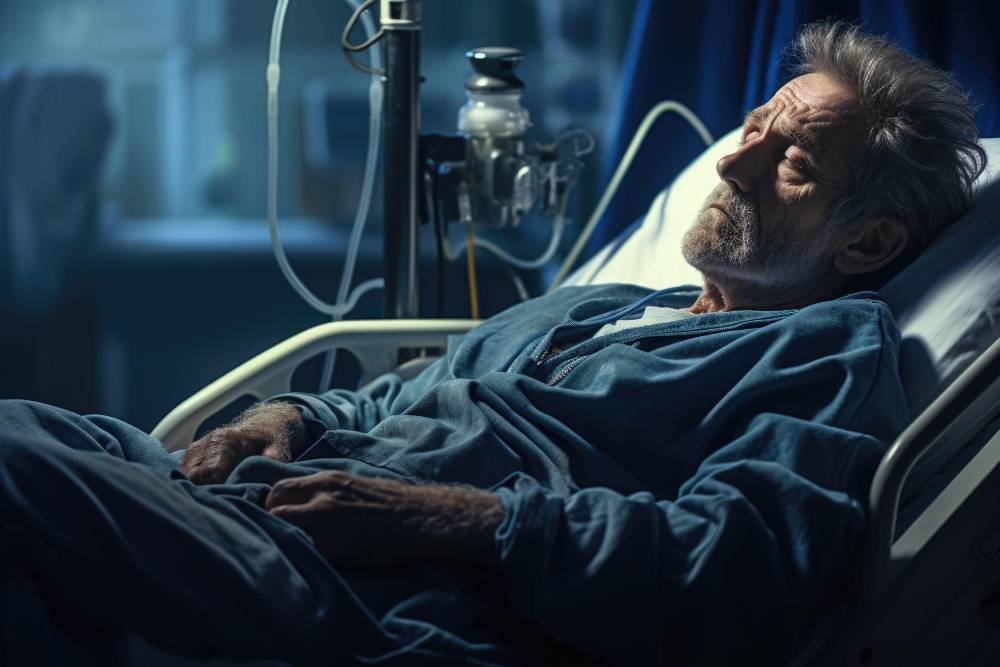Chronic Obstructive Pulmonary Disease (COPD) is a disease characterized by persistent narrowing of the airways. It is a common, preventable disease that can be treated. The disease is caused by harmful particles or gases. COPD is characterized by obstructive bronchiolitis (a disease of the small airways) and emphysema (destruction of lung tissue). Chronic inflammation leads to structural changes, including the narrowing of small airways and the destruction of lung tissue. This destruction of small airways results in reduced airflow and mucociliary dysfunction, which are characteristic features of this disease.
COPD is a general term that encompasses various previous terms now recognized as different forms of the same underlying problem. COPD overlaps with chronic bronchitis, emphysema, and asthma.
COPD is a chronic, progressive disease marked by persistent airway obstruction that does not show significant changes for months. Although this disorder is considered permanent, it can be partially reversible (at least temporarily) with bronchodilators and/or other therapies.
Patients with COPD typically seek emergency medical care due to acute exacerbations of their underlying condition. Some patients with severe COPD may carry documentation that can assist in their treatment and guide therapy.
ASSESSMENT
- Ensure scene safety and apply personal protective measures.
- Notify T1 (appropriate medical personnel) if necessary.
- Conduct an initial assessment using the ABCDE approach.
- Patients with COPD typically have oxygen saturation (SpO2) between 88% and 92%.
HISTORY
Patients complain of an acute worsening of respiratory symptoms (shortness of breath, cough, increased sputum production). The worsening occurs over hours or a few days.
Specific manifestations of an acute exacerbation of COPD include:
- Deterioration of previously stable conditions.
- Increased sputum production.
- Increased shortness of breath, especially during exhalation.
- Increased sputum volume and change in color.
- Chest tightness.
- Infection.
It’s essential to assess:
- Respiratory rate, use of accessory muscles, effort during breathing, and auscultatory assessment of lung sounds (e.g., crackles or wheezing) associated with breathing, indicating difficulty breathing.
- Whether the current condition is just a worsening of COPD or something new, such as pulmonary edema or acute asthma.
- Current treatment, including home oxygen therapy.
Differential diagnosis includes pneumonia, pneumothorax, left ventricular failure, pulmonary embolism, lung cancer, upper airway obstruction, and allergic reactions/anaphylaxis.
Approximately 80% of patients with acute COPD exacerbations can be successfully treated in non-hospital settings. Criteria for further patient care in a hospital include:
- Inadequate response to treatment administered by the IHMS team.
- New symptoms (cyanosis, altered mental status, peripheral edema).
- Worsening of symptom intensity compared to previous conditions (new-onset resting dyspnea) accompanied by an increased need for oxygen or signs of respiratory distress.
- Severe COPD (forced expiratory volume in 1 second [FEV1] ≤50%).
- Frequent exacerbations and hospitalizations.
- Severe comorbidities (pneumonia, cardiac arrhythmias, heart failure, diabetes, renal and liver failure).
- Exhaustion.
- Lack of caregiver support.
Determine whether there are TIME-CRITICAL features, which may include:
- Severe difficulty breathing (compared to the patient’s usual condition).
- Cyanosis (although peripheral cyanosis may be “normal” in some patients).
- Exhaustion.
- Hypoxia (oxygen saturation) <88% without response to oxygen therapy.
TREATMENT
Always check if the patient has their personal treatment plan.
- Follow guidelines for emergency medical situations and initiate care using ABCDE.
- Notify T1 if necessary.
- Place the patient in a comfortable position to facilitate breathing, often a forward-leaning sitting position.
- Oxygen – target oxygen saturation (SpO2) between 88% and 92%.
- Monitor oxygen saturation with a pulse oximeter.
- Monitor partial pressure of CO2 in exhaled air at the end of expiration using capnometry/capnography.
- Continuously monitor the heart rate.
- Document all observations, measurements, and actions.
Be prepared for respiratory arrest.
SUMMARY
- Early assessment of breathing, including oxygen saturation, is vital.
- If there is suspicion, administer oxygen therapy, titrating to achieve oxygen saturation between 88% and 92%.



0 Comments